Theme "Long jump with a running start"
Learn the fundamentals of the technique of the type of athletics being studied. Describe the main phases of the studied exercise.
Running long jump technique has three varieties: “bending legs”, “bending”, “scissors”. The simplest way of "bending your legs" was used until the end of the 19th century. The modern method of "scissors" first appeared in 1900, but became widespread only in the 30-40s. 20th century In 1920, the Finnish jumper Tuulos for the first time demonstrated a new long jump technique - “bending over” The technique of a holistic long jump from a running start can be divided into four parts: take-off, repulsion, flight and landing.
takeoff run. The run in the long jump is used to create the optimal speed of the jumper. The take-off speed in this form is closest to the maximum speed that an athlete can develop, unlike other types of jumps. The length of the run and the number of running steps depend on the individual characteristics of the athlete and his physical fitness. Leading athletes use up to 24 running steps with a take-off run of about 50 m. For women, these values are somewhat less - up to 22 running steps with a take-off run of over 40 m. repulsion.
Repulsion. This part of the jump starts from the moment the foot is placed at the place of repulsion. The foot is placed on the whole foot with an emphasis on the outer arch, some athletes put the foot from the heel. In both cases, some sliding of the foot forward by 2 - 5 cm is possible, this is especially observed when setting the foot from the heel, since there are no spikes on it and it can slide forward. This is also facilitated by the irrational setting of the pushing leg, located too far from the projection of the GCM.
The optimal angle of setting the push leg is about 70 °, the leg is slightly bent at the knee joint. Beginning jumpers and athletes with insufficient development of leg strength are not recommended to artificially bend the leg at the knee, as the jumper may not be able to cope with the support reaction forces acting on him. In the depreciation phase (from the moment the foot is placed on the support to the moment of the vertical), in the first fractions of a second, there is a sharp increase in the reaction forces of the support, then their rapid decrease occurs. Under the influence of these forces, flexion occurs in the knee and hip joints. From the moment of the vertical, when the swing leg is actively extended forward and upward, extension is performed in these joints. Until the moment of the vertical, there is a slight increase in the reaction forces of the support due to the work of the muscles and the inertial properties of the fly leg and arms.
The purpose of repulsion is to convert part of the horizontal take-off speed into the vertical take-off speed of the body of the jumper, i.e. give the body initial velocity. The optimal repulsion angle is within 75°, and the optimal departure angle is within 22°. The faster the repulsion, the less the loss of the horizontal take-off speed, which means that the range of the jumper will increase.
Flight. After the body of the jumper is separated from the place of repulsion, the flight phase begins, where all movements are subject to maintaining balance and creating optimal conditions for landing. The repulsion gives the GCM a trajectory of movement, which is determined by the value of the initial take-off velocity of the body of the jumper, the take-off angle and the take-off height. The world's leading jumpers reach an initial speed of approximately 9.4-9.8 m/s. The height of the rise of the CCM is approximately 50 - 70 cm. Conventionally, the flight phase of the jump can be divided into three parts: 1) takeoff, 2) horizontal forward movement and 3) preparation for landing.
Landing. This final part of the jump is of great importance for its range. Preparation for landing begins in the last part of the flight, when the jumper's GCM descends to its height during repulsion. The jumper straightens the legs at the knee joints, the shoulders go forward, the arms, slightly bent at the elbow joints, are retracted as far back as possible. For effective landing, it is necessary to hold the legs so that their longitudinal axis is at a sharper angle to the landing surface.
After contact of the feet with the landing surface (sand), the jumper actively sends his arms forward, bending his legs at the knee joints and bringing the CCM beyond the line of touching the sand with his feet. Some jumpers use side slip landings, i.e. after touching the sand with his feet, the jumper relaxes to a greater extent the leg in the direction of which he will make the exit, while actively helping himself with his hands and shoulders, a sharp turn is made in the direction of the exit. The turn is performed by moving through the back, i.e. back, while simultaneously bringing the other shoulder and arm forward. It must be remembered that bringing the arms forward prematurely will cause the legs to drop down and lead to an early touchdown on the landing site.
Study the gradation of errors when performing the studied exercise. Identify ways to eliminate possible motor errors
Error 1. Stretching the last steps in the run, and especially the last one. Bug fix Reducing the length of the takeoff while maintaining the number of running steps.
Error 2. Instability of running steps
Bug fix Takeoff with the use of control marks.
Error 3. Rapid start of takeoff with deceleration before takeoff. Bug fix Running with an increase in speed, simulating an attack. Specify the level of speed capabilities.
Error 4. Missing the block with the push leg. Error correction Multiple running of the takeoff with the task of accurately hitting the place of repulsion.
Repulsion
Error 1. The repulsion ends with incomplete extension of the pushing leg. Error correction Long jump over an obstacle.
Error 2. Incorrect setting of the push leg. Bug fix Jumping, pushing off after 4-6 steps of a run from a bench or a low support. Long jump with 6-8 takeoff steps over an obstacle placed far from the repulsion point.
Error 3. Max leg not bent enough at the knee. Error correction Jumps "in a step", pressing the shin of the fly leg to the thigh.
Error 4. Low lift of the thigh of the fly leg. Bug fix Jumps with the knee reaching the fly leg of objects suspended at different heights.
Error 5. Passive hand work. Bug fix Jumping with hand reaching objects suspended at different heights.
Flight
The "bending legs" method
Error 1. Loss of body balance in flight with forward rotation. Bug fix When setting the leg for repulsion, observe the vertical position of the torso.
Error 2. Premature pulling up of the pushing leg to the fly leg after the departure "in step". Bug fix Jumps "in step" through one step; to the third; for the fifth.
Error 3. Insufficient grouping before landing. Bug fix High jump long jump.
The "bending" method
Error 1. Long-term preservation of the position "in step" in the first half of the flight phase. Bug fix Jump over an obstacle with lowering the fly leg down after passing the obstacle.
Error 2. Early bending of the body at the beginning of the flight phase. Bug fix Long jump over an obstacle with bending of the torso over the obstacle.
Landing
Error 1. Premature lowering of the legs before landing. Bug fix Jump over an obstacle of low height, located at a distance of half the length of the flight.
Error 2. Strong torso and low leg raises. Bug fix Jump from a short run-up to an elevation.
Error 3. Falling back, closer to the footprint. Bug fix Jumping from a place with lowering the pelvis in the trace left by the legs.
1.3 Familiarize yourself with the methodology for teaching the technique of track and field exercises. Arrange the tasks in accordance with the typical training scheme used in athletics.
Task 1. Create an idea about the technique of the studied jump method
Facilities: Explanation of the details of the long jump technique. Demonstration of film loops, cinematographs, etc. Demonstration of the technique of jumping from a full or medium run.
Task 2. Teach the technique of repulsion.
Facilities: a) imitation of the movement of arms and legs in repulsion. I.p. - a push leg and a hand opposite to it in front, a swing leg and another hand behind. Transferring body weight to the push leg with simultaneous lifting of the swing leg bent at the knee and changing the position of the hands;
b) i.p. - the same, only the push leg on the bench, the fly leg below. Straightening of the pushing leg with simultaneous lifting of the flywheel and changing the position of the hands;
c) the same, but with pushing up and forward and landing on two legs;
d) sp. - standing at a distance of one step from the bench, the fly leg is in front. 1. - push step to the bench, 2 - fly step to a higher (in relation to the bench) barrier or support;
e) jump "on the move" from two to four steps of the takeoff with landing on the fly leg;
e) the same with landing in a lunge position;
g) repulsion from two to four running steps with jumping with the swing leg on the gymnastic apparatus;
h) jumping "in step", pushing off with a slow run after one step and the same, pushing off after two steps to the third.
Methodical instructions. On repulsion, the leg is placed on top of the entire foot. At the end of the repulsion, the pushing leg should be fully extended in all joints. The swing is performed with an energetic movement of the leg bent at the knee joint. The trunk must be kept in a vertical position.
Task 3. Teach landing technique.
Facilities: a) long jump from a place with a push of two legs;
b) high jump with landing on two legs;
c) a short run-up long jump over an obstacle;
d) long jump from six to eight running steps to the designated landing site.
Methodical instructions. During landing, the feet are placed parallel, shoulder width apart. At the moment of landing, depreciation bending of the legs in all joints is necessary to the position of a deep squat. To prevent falling back, you need to tilt your head and shoulders forward and down while bringing your arms forward.
Task 4. Teach a combination of takeoff and takeoff.
Facilities: a) jumping "in a step", pushing off with a quick run for every fifth step;
b) running along the takeoff run six to eight running steps with the designation of repulsion;
c) the same with the marking of the last steps;
d) the same with a jump;
e) long jumps from a short and medium run.
Methodical instructions. The speed in the takeoff should increase gradually. The last step is somewhat shorter than the penultimate one due to the active setting of the foot for repulsion with a "raking" movement. When training, the repulsion zone should be increased to 40-50 cm.
Task 5. Teach movements in flight.
The "bending legs" method
Facilities: a) jump from a place through an obstacle with pulling the knees to the chest;
b) a jump from a place to an elevation with a landing in a "sitting" position;
c) the same from six to eight running steps;
d) jump from six to eight takeoff steps over an obstacle located closer to the landing site;
e) a jump from six to eight steps of a run through two barriers located one after the other;
f) long jumps using the "bending legs" method from takeoffs of various lengths.
Methodical instructions. To reduce the forward torque, the body in the flight phase must be held in a vertical position, which is facilitated by raising the arms up.
The "bending" method
Facilities: a) imitation of the flight phase: jump up with pulling up the feet and slight bending of the torso;
b) imitation of the movement of the legs in the hang on the crossbar;
c) jump from five-six running steps with lowering the fly leg and moving both legs back;
d) the same, but in combination with the movement of the hands up and to the sides;
e) long jump in the "bending" way from two or three steps of the run, starting from the elevation;
e) long jumps by the method of "bending" from takeoffs of different lengths.
Methodical instructions. Flexion of the torso in the flight phase is carried out due to the active movement of the pelvis forward and abduction of the shoulders back.
Task 6. Determine the length of the full run.
Facilities: a) running with two or three increases in speed, simulating an attack;
b) run from six to eight running steps with the designation of repulsion;
c) running around the sector in order to determine the optimal run.
Methodical instructions. When performing exercises that imitate running, the speed is increased by increasing the pace of movements. After the run with the designation of repulsion, the landing is carried out on the fly leg, followed by a run. The take-off speed increases uniformly until the end of the repulsion.
Task 7. Improving the technique of the long jump in general.
Facilities: a) running in the rhythm of the takeoff with the designation of repulsion;
b) long jumps from a short, medium and full run in a mastered way
2.1 Select from literary sources a complex of general developmental and special preparatory exercises to prepare for the main athletics exercise.
a) A series of special and preparatory exercises:
1. Jumping on two legs. The exercise is performed without bending the legs at the knees; pushing off only with the foot.
2. From the hanging position on the gymnastic wall, raising the legs to the level of the grip with the hands.
3. Multiple jumps from one foot to another. When repulsing, the leg is placed straight on the entire foot with a raking movement down - back. The other makes a wide swing forward - up. The end of the swing must coincide with the repulsion; hands from behind the back alternately swing forward - up.
4. Multiple jumps on two legs over an obstacle. Bend your legs when pushing away minimally. When flying over an obstacle, the body is straight, the legs are bent at the knees, pulled up to the chest, the swing of the arms is done from behind the back from the bottom forward - up.
5. Jumping out of a deep squat and half squat with a push of two legs. Monitor the position and simultaneous straightening of the legs and torso.
6. Jump up from I.P. standing on one leg on a gymnastic bench.
7. Max with a bent leg from I.P. standing at a height of 30 - 50 cm. When performing the exercise, make sure that the pelvis is above the supporting leg, and the body does not deviate back.
b) Exercises leading to mastering the technique of the long jump with a run.
1. Long jump from a place with a push of one leg with an active swing of the other. The fly leg is set far back so that a wide, powerful movement can be made. The repulsion must coincide with the end of the swing. Land on both feet with active throwing forward of the foot.
2. Long jump from a place with a push of two legs. Follow the full straightening of the body and the swing of the arms. Land on both feet with active throwing them forward.
3. Jumping from a small run-up "in step" with reaching a suspended object (ball) with the head, arm, shoulder, knee. When performing the exercise, try to maintain the correct rhythm of the last running steps and the “in step” position.
4. Long jump from a short and medium run-up, starting from a gymnastic swing bridge. Follow the rhythm of the last running steps.
5. Jump over an obstacle with lowering the fly leg and bringing the push leg forward (changing the positions of the legs) followed by a run.
6. Triple jump from a place and from a running start.
2.2. Review injury prevention measures at the venue.
When organizing and conducting training sessions with young athletes and their participation in competitions, the requirements established in Russia for medical control over those involved, measures for the prevention of sports injuries, and the proper sanitary and hygienic condition of training areas and equipment must be ensured. In the process of working with young athletes in order to harden the body, it is necessary to widely use the natural forces of nature (sun, air, water), daily develop skills in observing a hygienic regime during training, while studying, working and at home.
3.1 Determine the particular tasks that will be solved in the preparatory part of the lesson and the content of the preparatory part of the athletics lesson (including exercises for attention, walking and running, general developmental exercises on the spot and / or in motion).
Preparatory part of the lesson solves the following tasks: 1. Prepare students' body for the upcoming motor load. The means of preparation can be physical exercises of a general developmental nature, simple in terms of coordination. Starting from grade 3, sets of exercises with gymnastic sticks, flags, balls, hoops are used. In this case, the exercises are performed with elements of walking, jumping, squatting, etc. Preparatory and lead-up exercises have a primary corrective effect. That is why in the primary grades the preparatory part of the lesson consists mainly of general developmental and corrective exercises. 2. Choose two or three exercises that are aimed at the formation of motor skills and abilities. 3. Use only preparatory physical exercises as a means of forming a certain motor quality. 4. Include in the preparatory part of the lesson exercises aimed at correcting the main and accompanying defects. Thus, eight to ten exercises of a different nature are introduced into the preparatory part of the lesson. It can last 10-15 minutes.
Abstract
the preparatory part of the athletics lesson / training session in athletics for students .... / students ....
Objectives of the lesson / lesson:
1 Development of speed-strength abilities.
Introduce students to the long jump technique
Strengthening the cardiovascular system
Time: 25min
Place: stadium
Dress: sports
Inventory and equipment: stopwatch, whistle
Tutorial: Zhilkin A.I. etc. Athletics: Proc. allowance for students. higher ped. textbook institutions / A.I. Zhilkin, V.S. Kuzmin, E.V. Sidorchuk. - M.: Publishing Center "Academy", 2003. - 464 p.
|
Private tasks |
Dosage | ||
|
Organize students to communicate lesson objectives. Emotionally prepare for the upcoming lesson |
Construction (checking those involved, uniforms, readiness for employment). Setting tasks and explaining the content of the lesson. |
Building in one line |
|
|
Attract attention |
Attention exercise (combat techniques on the spot): turns left, right, around |
Carry out in a single line. Repeat each technique 2-3 times. Achieve clarity of command execution |
|
|
Functionally prepare the cardiorespiratory and respiratory systems for the main load |
Walking, running |
4-6 min, 800 m |
Perform in a column of two along the second and third tracks counterclockwise. Control the discipline of the building. Running speed - 400 m for 2-2.5 minutes |
|
Functionally prepare the musculoskeletal system for the main load |
Walking on toes, hands behind head Running side step right, left side Running backwards Running with high hips Jump up from foot to foot Running with shin whipping Acceleration in pairs by whistle Ankle warm-up at the support |
20 seconds per exercise |
Build a group in 2 columns Walk on toes, lift your chin, keep your back straight. Keep your distance. Look back over the right, left shoulder. Higher hip, more step. We work more actively with the foot. Wider step! Lean forward a little! Run the race! We are actively working on the ankle joint. |
|
Warming up the main muscle groups |
Outdoor switchgear without items1. I. p. - o.s. 1 - 2 - head tilt to the right; 3 - 4 - and. P.; 5–8 - the same in the other direction 2. I. p. - o.s. 1 - 4 - circular movements of the head to the right; 1 - 4 - in the other direction. 3. I. p. - hands to shoulders. 1 - 2 - two circles with bent arms forward; 3 - 4 - the same back. 4. I. p. - o.s. 1 - 2 - circle with hands to the right; 3 - 4 - the same to the left. 5. I. p. - stand feet shoulder width apart, hands on the belt. Three springy forward bends trying to touch the floor with your hands; 4 - i. P. 6. I. p. - wide leg stance apart. 1 - tilt to the right, cotton at the heel; 2 - i. P.; 3 - 4 - the same to the other leg. 7. I. p. - stand legs apart, hands on the belt. 1 - bending the left, tilting to the right, left hand up, right behind the back; 2 - 3 - two springy slopes to the right; 4 - i. P.; 5 - 8 - the same in the other direction. 8. I. p. - stand legs apart, hands on the belt. 1 - turn the body to the right (do not tear off the heels from the floor); 2 - i. P.; 3 - 4 - the same in the other direction. 9. I.p. - wide stand Exercise "Mill". Opposite touching of the toes with the hands for each count 10. I.p. - right leg in front, left leg behind. Exercise - lunges. Three springy movements at the expense of 1-3. At the expense of 4 change the position of the legs. 11. I.p. - legs together, socks apart. Three jumps in place for a count of 1-3, for a count of 4 - a high 360 degree turn |
The number of repetitions of movements in the exercise 5-6 times, 5-6 minutes |
Exercise discipline Clear score, don't rush Back straight, look forward Monitor your range of motion The back is straight, the slope is clearly to the side Don't bend your legs Rear leg straight Landing on toes |
|
Exercises leading to mastering the technique of the long jump with a run. |
1. Long jump from a place with a push of one leg with an active swing of the other . Land on both feet with active throwing forward of the foot. 2. Long jump from a place with a push of two legs. Land on both feet with active throwing them forward 3. Jumping from a small run-up "in step" with reaching a suspended object (ball) with the head, arm, shoulder, knee. 4. Long jump from a short and medium run-up, starting from a gymnastic swing bridge. 5. Triple jump from a place and from a running start. |
5-6 repetitions |
Follow the full straightening of the body and the swing of the arms. Follow the rhythm of the last running steps. |
Standing long jump
Standing long jump - this is a complex, locomotor, acyclic, symmetrical movement associated with the repulsion of the body from the supporting surface, throwing it up and then landing. This type of jump is the simplest for anatomical analysis, although it is the main one, and all the others (with a triple run) are its varieties. The long jump from a place has four phases: the first is preparatory, the second is a push, the third is flight and the fourth is landing .. The movements during the jump are due to the interaction of external and internal forces. From external forces highest value have the force of gravity and the reaction force of the support, and the force of gravity acts throughout all phases of movement, and the reaction force of the support only in the first and fourth phases. O.c.t. body in this type of jump describes a parabola, the trajectory of which is the resultant of two forces: the force of the push and the force of gravity of the body. The force of the push during a long jump from a place should be directed approximately at an angle of 45 ° to the horizon (according to theoretical calculations in mechanics, since the movement of a body in the phase of free flight during jumps can be considered as the movement of any body thrown at an angle to the horizon). The area of support in different phases of the jump changes: in the preparatory phase it is the largest, as it is formed by the area of the plantar surface of the feet and the area of the plantar surface located between them; towards the end of the push phase, the support area decreases due to the fact that only anterior section feet; at the beginning of the last phase - the landing phase - the support area is also small, since the landing occurs only on the back of the foot, and by the end of this phase, the support area increases, since the jumper relies completely on both feet. In this regard, the degree of body stability in each supporting phase of the jump is not the same: in the first and last phases, the stability is greater than in the second phase. At the same time, backward stability is more pronounced in the first phase, and forward stability is more pronounced in the last. The work of the motor apparatus in the first phase is reduced to providing a posture and creating the most favorable conditions for repulsion. In order for the repulsion to be strong, Fr. c. so the body at the beginning of it should occupy the lowest position, and at the end - the highest. In addition, an important condition that increases the repulsion force is the stretching of the leading muscles that carry it out. In the preparatory phase, the jumper's body is in a squat position. Under the influence of gravity, flexion in the hip and knee joints, extension of the feet occurs. torso Not how much it is tilted forward, the arms are unbent at the elbow joints and laid back, the belt of the upper limbs is lowered. This position is provided by the tension of the muscles, not of the same name as the movements in the joints, but by their antagonists. Thus, the hip extensors, leg extensors and foot flexors are tense on the lower limb. They perform inferior work and are in a stretched state. Parallel placed on the entire plantar surface of the foot increase muscle stretch. A heel tear reduces the area of support, worsens the conditions of balance and does not provide sufficient stretching of the muscles.Rice. Standing long jump. 12 consecutive body positions:
/ - preparatory phase; 2, 3, 4, 5, 6 - push; 7, 8, 9, 10 - flight in the air; 11, 12 - landing (orig.)
The trunk and head are held by the extensor muscles of the spinal column, which also perform inferior work and are in a stretched state. The position of the arms in the elbow joints is provided by the tension of the extensors of the forearm (triceps muscle of the shoulder), and in the shoulder - the extensors of the shoulder (deltoid, latissimus dorsi, subscapularis, etc.). The arms pulled back stretch the shoulder flexor muscles (pectoral muscles, biceps, coracobrachialis). The squat position, the lowered belt of the upper extremities lowers about. c. t. of the body and stretch the muscles that provide subsequent repulsion. In the second phase, repulsion occurs simultaneously with both legs. The parallel arrangement of the feet provides a more uniform transfer of the repulsive force through the pelvis to the o.c.t. body and allows greater use of the muscles of the plantar surface of the feet. During repulsion, flexion in the ankle joint, extension in the knee and hip joints, straightening of the torso and a sharp swing of the straightened arms upwards occur, which contributes to an increase in the o.c.t. body. The lower limbs, torso and upper limbs form an almost straight line, and the repulsive force is transmitted along the bone base to the b.c.t. body. The leading muscles during repulsion are: foot flexors (muscles of the plantar surface of the foot, back and outer surfaces of the lower leg), extensors in the knee joint (quadriceps femoris), extensors in the hip joint (mainly the gluteus maximus muscle), extensor muscles of the spine (mainly the muscle , straightening the trunk), flexors in the shoulder joint (pectoralis major and minor, anterior deltoid, coracobrachial biceps brachii). All these muscles perform overcoming work. To transfer the repulsive force to the b.c.t. the body of the jumper must be fixed in all joints, therefore, although for a short period of time, along with the indicated muscles, their antagonists also tense. The flight phase is not passive, it is necessary to use the flight path to the maximum, to accept and maintain a certain position of the body, which would not only not interfere with movement, but also contribute to the subsequent landing. In the flight phase, the lower limbs are carried forward. To reduce their moment of inertia, flexion in the knee joints and extension of the feet occur, carried out by the corresponding muscle groups that perform the holding work. Bringing the legs forward is possible due to the tension of the hip flexor muscles (iliopsoas, rectus femoris, tailor and scallop). At the same time, the pelvis moves backward and somewhat downwards. At the same time, movements of the arms (first forward, then down) and flexion of the body occur. The movements of the arms are due to the sequential tension of the flexors and extensors of the shoulder. In the flexion of the body, mainly the abdominal muscles (the rectus and oblique abdominal muscles) take part.
Javelin-throwing
Another example of an acyclic movement is the javelin throw. Javelin throwing is a complex, locomotor, asymmetric, acyclic movement. In this movement, the following phases are distinguished: the phase of the initial position, the phase of preliminary actions and the phase of the final movement.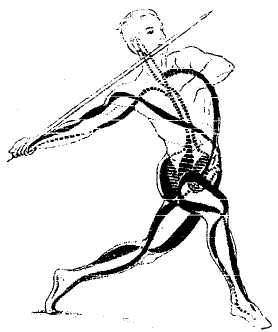
Rice. Home position phase
Home position phase characterized by the fact that the arm with the spear is raised up and bent at the elbow joint. The spear is located above the shoulder joint, the hand is approximately at the level of the auricle. This position is held by the flexor muscles of the hand and fingers (radial and ulnar flexors of the wrist, superficial and deep flexors of the fingers, long flexor of the finger, worm-like muscles), flexor muscles of the forearm (brachial, brachioradialis, biceps of the shoulder, pronator round) and muscles that remove shoulder (deltoid and supraspinatus). Phase of preliminary actions . The arm with the projectile is extended at the shoulder and elbow joints, the belt of the upper limbs is retracted, the body is turned in the direction of the spear movement, which is ensured by the work of the corresponding muscle groups. In this phase, the main weight falls on the opposite leg. It is extended at the hip and knee joints and bent at the ankle joint. The leg of the same name is bent at the knee joint, moved forward and placed on the supporting surface with the outer part of the foot (the thrower performs a “cross” step). Phase of the final movement . In this phase, the thrower performs extension of the leg of the same name in the hip and knee joints and flexion in the ankle joint. These movements are provided by contraction of the corresponding muscle groups. The main load falls on the gluteus maximus, biceps femoris, semitendinosus, semimembranosus, adductor maximus, quadriceps femoris, triceps calf, tibialis posterior, extensor digitorum longus, and extensor extensor longus thumb. These movements are joined by flexion of the trunk as a result of contraction of the iliopsoas, rectus abdominis, and external and internal oblique abdominal muscles. The girdle of the upper limbs moves forward with the torso. The thrower bends the arm with the spear at the shoulder joint. In the elbow joint, flexion first occurs, and then a sharp extension of the forearm. The final movement is the flexion of the brush. Muscle work is ballistic in nature.Back somersault from a place
Back somersault from a place - this is a complex, acyclic, rotational movement, in which the body is repulsed from the supporting surface, the flight with the rotation of the body and its subsequent landing. The body rotates around a free axis passing through about. c. t. in the transverse direction. It is possible to rotate the body around the sagittal axis (with a side somersault). In a somersault back from a place, four phases are distinguished: preparatory, push phase, flight phase, landing phase. The flight phase, in turn, is divided into takeoff, grouping, rotation and straightening of the body (ungrouping). A somersault back from a place is conditioned, like any movement of an athlete, by the interaction of external and internal forces. The direction of the repulsive force passes ahead of o. c. t. body so that between about. c. t. and the point of application of force forms a shoulder, in connection with which a moment of rotation arises. The force of gravity acts in all phases of movement, while the reaction force of the support - only in the first, second and fourth phases. The degree of stability of the body changes in the same way as when jumping. During landing, the same muscles work as in the preparatory phase: foot flexors, extensors in the knee and hip joints. They perform inferior work at the beginning of the phase, and overcoming work when moving from a squat to a vertical position. The reduction of shocks during landing is achieved due to the depreciation properties of the lower extremities (menisci, ligaments of the femoral head, etc.), their specific position (bent at the knee and hip joints), due to the inferior work of the muscles, torso tilt and soil deformation. As for the mechanism of external respiration, in the preparatory phase favorable conditions are created for exhalation, when pushing away (due to the swing of the arms up) - for inhalation, in flight, breathing is usually somewhat delayed, and upon landing, exhalation occurs. The jump contributes to the predominant development of the muscles of the lower extremities, consistency in work individual groups muscles and movement precision.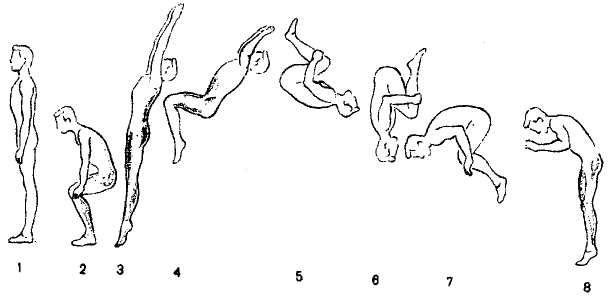
Rice. Back somersault: 1 - starting position, 2, 3 - repulsion phase, 4, 5, 6, 7 - flight phase,
8 - landing phase.
In the preparatory phase, the athlete squats. At this moment, under the influence of gravity (when viewed sequentially from the supporting surface), the links of the body in the joints are very specifically located. With a fixed foot, the lower leg is tilted forward, the angle between the foot and the lower leg is reduced, which is typical for foot extension. The knee joint is bent, but the thigh is close to the fixed lower leg, so that the angle between the lower leg and the thigh is reduced. The hip joint, like the knee, is in a state of flexion, however, it is not the hip that moves forward, as usual when bending the free leg, but the pelvis. The trunk is also in a state of flexion, the head is slightly tilted forward. This position is provided not by the muscles that produce these movements, but by their antagonists - the flexors of the foot, the extensors of the lower leg, the extensors of the thigh, torso and head. Moreover, they perform inferior work with distal support. The preparatory phase ensures the lowering of about. c. t. of the body and helps to stretch the muscles, preparing them for a stronger subsequent contraction in the repulsion phase. In the repulsion phase, there is a sharp flexion in the ankle, extension in the knee and hip joints, extension of the torso, head and swinging the arms up. The same muscle groups are tense as in the first phase, but they perform overcoming work. On a short time the antagonists of these muscles are also included in the work: the extensors of the foot, the flexors of the lower leg, thigh and spinal column, ensuring the creation of a rigid kinematic chain through which the repulsive force is transmitted. Raising the upper limbs is carried out due to movement in the shoulder joint and joints of the bones of the girdle of the upper limbs. At the same time, the shoulder flexors, working with the upper support, and the muscles that raise the belt of the upper limbs are tensed, and then (to fix the links of the upper limb) all the muscles surrounding the shoulder, elbow, wrist joints and joints of the hand are turned on. The upper limbs, moving the weight of the body upwards, raise the b.c.t. body to create an appropriate trajectory for it in flight. Since the moment of rotation of the body has arisen, it is necessary to arrange the parts of the body in such a way as to reduce the moment of inertia by increasing the angular velocity (according to the law of constancy of the moment of the number of movements). To do this, all points of the human body should be as close as possible to the axis of rotation. Therefore, in the flight phase, the so-called grouping is performed, in which the moment of inertia of the body decreases by about 2.5-3 times. The angular velocity increases by the same amount, which allows you to perform one or two; full rotation or rotation of the body. When grouping, flexion of the spinal column, flexion in the hip and knee joints, extension of the foot and flick head back (head jerk). The upper limbs descend, grab the shins and pull the legs towards the body. The movements of the spinal column, as well as movements in the joints of the lower extremities, are due to the tension of the corresponding muscle groups: the flexors of the spine, the flexors in the hip and knee joints, and the extensors of the foot, which first perform overcoming and then holding work. The jerk of the head is produced by the extensor muscles of the cervical spine and the muscles involved in the movement of the head backward, which are located on the back surface of the atlantooccipital and atlantoaxial joints. A jerk with the head, as it were, informs the body of an additional moment of the number of movements, which is transmitted to the lower part of the body, contributing to the acceleration of rotation. The lowering of the upper limb occurs predominantly; under the influence of gravity. The smoothness of movements is due to the inferior work of antagonists - the muscles that raise the belt of the upper limb. When gripping the shins, the flexors of the hand and fingers are tense. The bent position of the arm in the elbow joint is provided by the tension of the flexors of the forearm, working with proximal support. After rotation of the body to reduce the angular velocity, in accordance with the same law of constancy of the moment of the number of movements, ungrouping (straightening of the body) is performed - flexion of the foot, extension in the knee and hip joints, in the spinal column. With slow ungrouping, when the centrifugal force arising from rotational movements tends to remove individual parts of the body from the axis of rotation, the same muscles work as during grouping, but in a yielding mode. With rapid ungrouping, when centrifugal forces are not enough to move the body links away from the axis of rotation, these movements are performed due to the overcoming work of the antagonist muscles. The flexors of the foot, the extensors in the knee and hip joints, as well as the extensors of the spinal column are tensed
REPETITION AND SELF-CHECK QUESTIONS
- What does the term "dynamic anatomy" mean? What forces act on the body of an athlete in static positions and during movements? What is the general center of gravity of the human body and why is it determined? What types of body balance do you know? What determines the degree of stability of the body? Give a classification of the main movements of an athlete. Analyze the position and work of various parts of the athlete's body with proximal support. Analyze the position and work of various parts of the athlete's body during distal support. What movements are called cyclic? What phases of movements are distinguished in walking? What muscles work in each phase and what work do they do? What are the phases of crawl swimming on the chest? Give an anatomical description of each phase. What movements are called acyclic? Conduct an anatomical analysis of the standing long jump. What movements are called rotational?
Annex 1
(used when performing tests)

Leg stand apart
hands to the side

Handstand,
legs apart
knees together

Emphasis crouching on the right, left behind on the toe
Emphasis on your knees

Emphasis on the left knee,
right rear

Emphasis lying
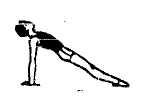
Emphasis lying behind

Emphasis lying sideways

Emphasis lying on the back of the forearms

Emphasis lying on the hips

Balance on one leg, leaning over
forward, other leg back, arms to the sides,
bent, hands behind the head
Lateral balance on one leg, the other to the side

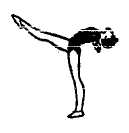
Rear balance on one leg, arms to the sides

Half twine
Rack on the shoulder blades
shoulder blade stand,
legs bent

Plow pose (toes touch the floor behind the head)

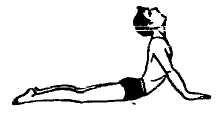
cobra pose

Bridge on the forearms
Lean forward
Leaning forward
Lean forward
with capture
squat on toes,
hands on the belt
Half squat,
hands forward

Squat on the left leg, right forward, arms forward
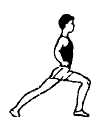
Lunge right
Handstand
kneeling
Rack on
left knee

Sed with straight
feet

Sed corner

Sit on heels
tilted
Sed bent over
Sit with a grip
Sit on heels
headstand,
legs bent
Headstand
Approximate diagram of the anatomical analysis of positions and movements
Anatomical full name student (s) __________________ analysis of the situation Group number ___________________________ Course ________________________________ Faculty ___________________________ Lecturer _______________________ Lean forward1. Description of the posture (indicate the position of the body, taking into account all parts of the spinal column, head, upper limbs, lower limbs)

Scheme 1 A Scheme 1 B 3. Acting forces (description of the direction of acting forces)
Schematic representation with a projection onto the area of the support of the OCT
 _______________Scheme 2 ______________ Description of the area of support ________________________________________________________________________________________________________________________________________________________________________________________________________________________________________________________________________________________________________________________________________________________________________________________________________________________________________________________________________________________________________________________________________________
Stable Unstable Indifferent Justification of the type of equilibrium: ________________________________________________________________________________________________________________________________________________________________________________________________________________________________________________________________________________________________________________________________________________________________________________7. Degree of stability (shown on the diagrams the angles of stability in two projections, their approximate value) Front angle - α Right angle - γ Back angle - β Left angle - λ
_______________Scheme 2 ______________ Description of the area of support ________________________________________________________________________________________________________________________________________________________________________________________________________________________________________________________________________________________________________________________________________________________________________________________________________________________________________________________________________________________________________________________________________________
Stable Unstable Indifferent Justification of the type of equilibrium: ________________________________________________________________________________________________________________________________________________________________________________________________________________________________________________________________________________________________________________________________________________________________________________7. Degree of stability (shown on the diagrams the angles of stability in two projections, their approximate value) Front angle - α Right angle - γ Back angle - β Left angle - λ WITH  circuit 3 A circuit 3 B
circuit 3 A circuit 3 B
The ratio of stability angles (mark)
| α = | β | γ = | λ | ||||||
| α > | β | γ > | λ | ||||||
| α < | β | γ < | λ |
9. the position of the body links in the joints and the work of the muscles
| Joint name | The position of the links of the body in the joint | Support for muscles to work | Muscles that perform holding work |
Control work on individual task
GIVE ANATOMICAL ANALYSIS
Chapter: Gymnastics
- Failure and approach to the teacher. Opening with an added step to the left. Rebuilding from a column of one to a column of two. Carrying the gymnastic bridge together. Squat - hands forward. Jump in place with a change of legs (scissors). Jump on both (jump), hands arbitrarily. Rebuilding from one line to two. Translation of a gymnastic stick from a horizontal position to a vertical position and vice versa (starting position - arms extended, upper grip).
- Rope climbing without legs. From the hang with a wide grip, the transition to the hang on bent arms (crossbar behind the head). Rope jumping (on two, on one, with a change of legs). Bending and straightening of the arms in emphasis lying behind the hands on chairs. From a tilt, bending forward, legs apart, arms to the sides, turns of the torso (windmill). Movement in support from behind: a) feet forward; b) backwards. Lifting by force on the crossbar (through one arm). From the emphasis on the hands (bars) rise by kip.
Chapter: Athletics
- Low start (starting position standing). High start (starting position standing). Shot put from a place. Starting acceleration and transition to distance running. Transfer of relay. Start from prone position (obstacle course).
Chapter: Sport games
Basketball
- Player's stance. Passing the ball with both hands from the chest in place. Throwing the ball into the basket with one hand from the shoulder from the spot. Passing the ball with one hand from the shoulder. Passing the ball with both hands from the head. Throwing the ball around the ring with two hands from below (after moving forward). Passing the ball with one hand from below and from the side. Keeping the ball in place. Throw with two hands from the head in a jump.
Volleyball
- Top pass of the ball. Moving with side steps. Reception of the ball with two hands from below (after moving forward). Bottom straight feed. Top direct feed. Blocking an attack.
Football
- Hitting a stationary ball with the inside of the foot. Stopping a rolling ball with the inside of the foot. Hitting a stationary ball with the outside of the instep. Throw-in from the sideline. Heading the ball.
Chapter: ski training
- Alternate two-step move: repulsion with legs and sliding. Simultaneous two-step move. Turns on the spot by overstepping. Alternate two-step move: hand movements. Herringbone climb. Descent in a high stance. Climbing up the "ladder". Stepping up.
organization independent work when studying the topic
"Anatomical analysis of the positions and movements of the body"
I. The concept and scheme of anatomical analysis. II. General classification body positions. III. Characteristics of body positions:- Rack; Visas; Emphasis on parallel bars; Bridge.
- Walking. Run. Swimming.
- Standing long jump; Somersault back.
Literature
- Human anatomy / edited by V.I. Kozlova M., 1978 / Butin M.M. Skiing for faculties of physical education M., 1983 and other literature on skiing Grachev M.S. Anatomy of the movement apparatus M., 1972 Ivanitsky M.F. Human Anatomy M., 1947 Ivanitsky M.F. Human Anatomy M., 1985 Athletics. Palyg's textbook. Gymnastics. Textbook for faculties of physical education M., FiS, 1980 Tailors. Sports Games M., 1976, 1981 Tvaladze G.M. Anatomical motion analysis human body M., 1969
Jumping is one of the oldest disciplines in athletics. High level training in this sport will also improve the technique of playing volleyball, tennis, parkour, etc. Often, athletes combine strength training with jumping in order to make classes more “multifaceted”, developing not only strength, but also flexibility, agility, and speed. Achieving results in jumps, both in length and in height, depends on the degree of preparation. In the first case, the main one is the maximum take-off speed, in the second - the repulsive force. The exercises are aimed at developing these skills.
Jump training program
Preparation for jumping training of both types is similar, so you should first give a set of preparatory exercises, and then consider in detail the programs for high jumps and long jumps.
General training program:
- before any activity, it is imperative to do a warm-up and stretching for at least 5-7 minutes;
- squat - this develops the muscles of the legs, abdomen and back, makes the movements more “elastic”. Norm - 50-100 squats;
- jump rope - this strengthens the calf muscles, develops endurance. You should start with 100 jumps, gradually increasing the number to 400-500. Vary your speed, take breaks;
- run. useful not only for the muscles of the legs, but also for health in general. A 1.5-2 km run is an excellent preparation for an intense jumping workout.
long jump training
The main skills, as we have already said, in the long jump are the correct and strong repulsion, as well as the speed of the run. In addition to general exercises, trainers advise doing the following:
The benefits of jumping Even if you are not a professional athlete and do not strive to achieve high results, jumping can be very useful. According to coaches, they develop endurance, improve overall physical training have beneficial effects on health.
- run, lifting your hips high: 20 times for each leg slowly, then at an average speed, and finally at the highest possible speed;
- train your hands - this is important for giving acceleration to the body. Starting position: standing, legs slightly bent. Perform intense swings with your arms, as if you were running. Do 2 sets of 25-30 seconds;
- do not neglect plyometric training. Perform several alternating sets: jumping onto a step, jumping off it, explosive jumps alternate with jumping for a distance. Follow the correct push;
- exercise with weights - for training the repulsion force, this is very effective method. Holding a bar from a barbell or a barbell (maximum 30 kg) on your shoulders, walk around the hall, paying particular attention to the fact that at the highest point of extension the push leg is fully extended, and the thigh of the fly leg is parallel to the floor during the step.
High jump training
To increase the height of the jump, first of all, it is important explosive force, therefore, the main exercises should be aimed precisely at its development:
- develop the ligaments and muscles of the legs with weighted squats. Holding a light barbell (15-20 kg) on your shoulders, do 2-3 sets of 15 repetitions;
- jump high on one leg. You can jump over obstacles. In this exercise, the main thing is that there is a person nearby who can insure you from falling. Do 2 sets of 15 repetitions on each leg, alternating them;
- do not forget about plyometrics - somersaults, explosive jumps, including from a hill with a soft landing, are very useful for jumping athletes;
- and most importantly, the high jump itself. Starting position: standing straight, feet shoulder-width apart. Sit down so that the angle between the hips and shins is 135 °, stretch your arms above your head, and then jump up sharply, reaching for your arms as much as possible. It is important that when performing the exercise, the muscles of the thighs are tensed more than the muscles of the legs.
After training, do a hitch with stretching - 7-10 minutes.
Be sure to make "control" jumps, write down the results - so you can follow the development of the skill.

What results can be achieved
You should not expect a quick effect from training: as in any other discipline, planning and diligence are important in jumping. If for several months you regularly, at least 2-3 times a week, work hard, the result will be noticeable. You will jump further and higher. But overtraining should not be allowed - daily significant loads will give the opposite of the expected result - muscle pain and general weakness of the body.
As we have already said, a jumping training program must be carefully planned, and the load in it should be evenly distributed. If you are not a professional athlete, then "building" a set of exercises properly for you will be a difficult task. Therefore, it is better to contact an experienced trainer.
Fitness instructors are always ready to give you the necessary advice, help in drawing up a training plan, check the correctness of the exercises and adjust the program as needed.
Jumping is one of the oldest disciplines in athletics. Both long jump and high jump are included in school curriculum physical culture. A high level of jumping helps improve the technique of volleyball, basketball, tennis and a number of other sports. Athletes often combine strength training with jumping to make training more versatile, helping to develop not only strength, but also agility, flexibility, and speed. Long jumps help develop speed, repulsion power, and coordination. You can jump in length from a run or from a place, and in these two cases the jumping technique will be slightly different.
Features of jumping from a place
Classical long jumps are an independent type of competition when passing physical education standards at school. They are also often included in athletics all-around programs or are a separate exercise for harmonious athletic development. Having mastered how to jump in length from a place, you can develop speed and strength qualities, jumping ability, sprinting skills.
Before disassembling the technique of jumping from a place, you need to understand a little about what kind of exercise it is. We know from school that this exercise is performed by simultaneously taking off from the surface of the legs, and the goal of the jumper is to overcome the maximum distance in flight. Having reached contact with the ground, the jumper straightens up and leaves the landing zone. Then the length of the jump is measured. This is done along the perpendicular between the extreme separation point and the landing. The point of contact in this case is the nearest landing place for any part of the body. There are standards that allow you to objectively assess physical form jumper:
- For schoolchildren 8-10 years old, the norm is 120-160 cm.
- Schoolchildren 11-15 years old - 150-200 centimeters.
- For guys and men aged 16-30 years - 200-240 cm.
For women, the same standards are reduced by 10%. The age categories remain the same.
Now let's take a closer look step by step technique how to jump long from a place.
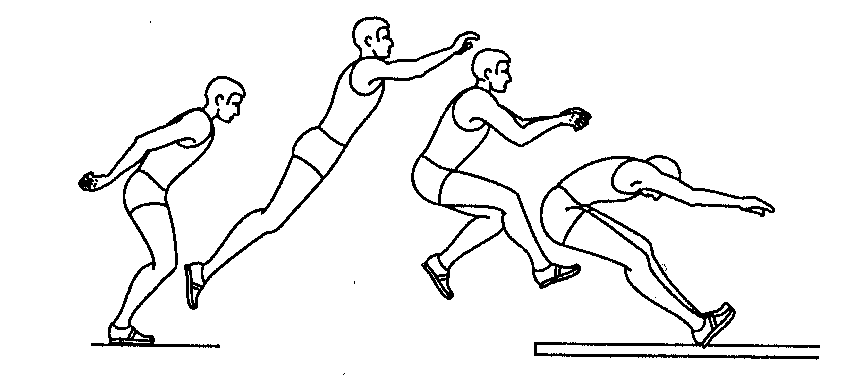
Preparing for the jump
The initial stage, which involves the adoption of the starting position. It is quite important, as it determines the strength of the push and the overall result of the jump. To take the correct position, you need the following steps:
- You need to stand at the starting line.
- Legs should be placed at shoulder level.
- Lower your hands down, take them back a little. Bend your elbows so that you can push your body forward.
- Put your feet on the whole foot.
- Bend your knees and hips so that they are at the level of your toes.
Repulsion
This stage is performed immediately after the previous one, without stopping, when the body is still moving down by inertia, while the hip joints begin to unbend. Hands are thrown forward in the direction of the jump. The second phase of the exercise is performed as follows:
- Hands are sharply thrown forward.
- The hip joints are pulled forward.
- The knee joints are flexed.
- With an explosive movement, the feet are lifted off the ground.
Flight and landing
When the athlete is in the air, he pulls the knee joints to the chest and extends the body in a straight line. At the end of the flight stage, the arms are lowered and the feet are carried forward. Then contact with the ground occurs and the jumper lands. During flight and landing, the following movements are made:
- Upon contact with the surface, the hands should be brought forward to make it easier to maintain balance.
- The knees bend to provide a springy landing. At the same time, the load on the joints and ligaments is reduced.
- When landing, the athlete needs to straighten up and leave the exercise area.
To do a good standing long jump, don't land with your legs straight as this can injure your knee joints. It is also important to first work through the above stages separately, and only after proceeding directly to full-fledged jumps.
Errors when performing jumps from a place
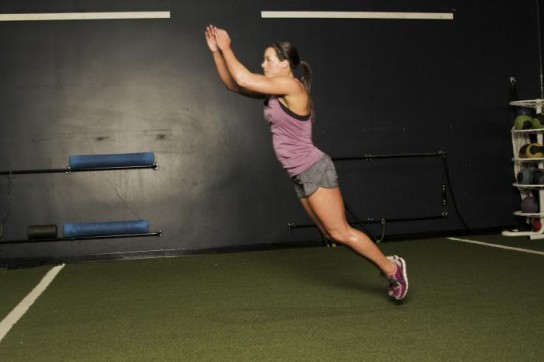
Both schoolchildren and experienced athletes in the process of jumping from a place can make typical mistakes that worsen the results. Among them are the following:
- Uncoordinated movement of arms and legs.
- Premature lowering of the legs.
- Not full extension of the knee and hip joints.
- Fall on contact with the ground.
It is also important remember the warm-up and its meaning. It is needed to prevent injury. You also need to take into account that learning to jump in length from a place will work out if the legs and shoulders are sufficiently developed, and the general physical preparation is at the level. Therefore, it is important to take care of improving the power parameters in general.
- Be sure to study the jumping technique - it must be perfect.
- Strengthen your upper body muscles through strength training.
- Run more.
- Practice other types of jumps: high jumps, running jumps, and so on.
- Do stretching exercises every day.
- Track your progress to improve your achievements even more.
Triple jump from a place: execution technique
There is another type of jumping from a place - triple. He is can be run from a run. This jump is included in the program of all athletics competitions. The technique of its implementation is divided into the following stages:
- Push off with both legs for the first time.
- Flight at the first step.
- Second repulsion.
- Flight at the second step.
- Third repulsion.
- Third flight.
- Landing on feet.
Fulfilling triple jump, you need to alternate legs: push with two legs left, right, left leg, and then landing on both legs. At the first repulsion, the same actions are performed as in ordinary long jumps. Then you need to throw one leg forward, bending it at the knee joint. Make sure that the shin is directed down and slightly forward.
The second leg, which is slightly bent at the knee, is held behind. Then you need to "raking" the movement to land on the front leg. The hind leg is brought forward by means of a sharp swing, and then the second repulsion is performed.
The second flight stage starts on the other leg. Then, thanks to a new "raking" movement, a repulsion is made a third time. During the last flight, you need to pull the jogging leg to the flywheel, bend them at the knee and bring them closer to the chest. Then you need to land using classical technique jumping from a place.
For the most effective performance of this exercise, you need to push off strongly and perform a swing movement. Try to lengthen the flight phase and don't lower the fly leg to the ground when taking off too quickly.
Running long jump
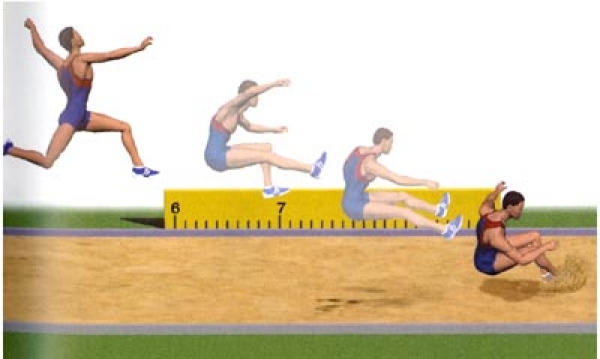
The long jump with a running start is a rather difficult exercise, taking into account the execution technique. The main difficulty is that the exercise consists of several stages, which are not repeated among themselves. To achieve maximum results, you need to perform them as powerfully as possible.
In any type of jump, four stages are distinguished: take-off, repulsion, flight and landing. During the flight, three types of jump can be used: with bent legs, with bending and "scissors". To get the maximum result, you need to know how to run long jump correctly. Recommended stick to the following tips:
- In the process of take-off, you need to gain maximum speed and maintain it during repulsion.
- When pushing off, you need to change the horizontal movement of the body to the correct angle so that the take-off speed is maintained.
- Next, the jumper prepares himself for landing, continuing to adhere to the chosen method of flight.
- When making contact with the ground, you must move your feet as far forward and up as possible to prevent a fall.
Men are usually recommended to use a distance of 50 meters for a run, women - 35-40. This allows you to gain maximum speed before repulsion. But everything is individual, and each athlete can choose the distance for himself.
Today, professional athletes one of three types of changes in the dynamics of running speed is used:
- Increasing speed gradually from the beginning of the takeoff and its sharp increase before making a push.
- An active increase in speed in the middle of the distance, which is replaced by the so-called capable run before making a take-off movement.
- A quick start, in which the gained speed is made in the middle of the distance and increases sharply before repulsion.
The last method is the most popular, as it makes it possible to gain maximum speed. When flying, the athlete needs to maintain balance and create an optimal starting position before landing. Although at first it may seem that everything is simple, in practice the flight phase is quite complicated and largely affects the final results.
It has already been said that there are three variations of running jumps. Some athletes, however, combine scissors and backbends, and this often leads to very good results. Of course, the technique becomes more complicated, since the combination of several elements is always harder to master than one technique. Remember that you can not land on straight legs - this is fraught with knee injury. To learn how to perform the exercise correctly from a technical point of view, you need to prepare yourself for serious work.
Features of the right training for the long jump

To learn how to long jump far, both from a place and from a running start, you need to push off strongly and develop maximum speed (if we are talking about the run). Therefore, you need to improve your overall physical fitness. In addition, experts recommend doing the following exercises:
- Running with the maximum rise of the hips: on each leg 20 times at a slow pace, and then at an average speed. Then you need to try to develop the maximum possible speed.
- It is important to train your arms - this will help give the body maximum acceleration. You need to stand up, bend your legs a little and perform intense swings with your arms, similar to how you do it when running. It is recommended to do several approaches.
- Plyometric training will be useful. Do several sets with alternation: first jumps to a hill, then jumps, alternate explosive jumps with jumps for a distance. In this case, it is important to monitor the correctness of the push.
- To train the repulsion force, you need to deal with weights. So, you can walk around the hall with a bar or a barbell on your shoulders, paying attention to the fact that at the maximum point of extension the push leg straightens, and the thigh of the fly leg becomes parallel to the floor during the step.
Long jumps are quite difficult from a technical point of view, so it is initially important not to chase the results, but to master the execution technique. It may not be as fast, but after some time of regular training, you will succeed.
Speed, jumping ability and emotionality - probably best words, which are suitable for describing the long jump. For 6 attempts, the strongest jumpers compete with each other in the long jump sector, constantly changing their leading positions. You don't know who will be the winner until the last try, and that's what makes this discipline of athletics so popular.
The long jump can be safely called "run and jump" or "sprint and jump", since the jump itself, in fact, is just a part of this discipline of athletics. Yes, there is a push-off technique, a jump pit technique, and a landing technique. All these elements of technique are certainly important, but they can improve your jump only if you have a good and fast run-up. When you are in the air, you can no longer significantly change the length of the flight, which, in fact, has already been determined by the speed that you managed to accumulate during the takeoff, no matter how well you performed the flight over the pit or the landing technique.
That is why the history of the long jump is the history of great sprinters from Jesse Owen to Carl Lewis, who were unrivaled in this easy discipline athletics. And every successful jumper understands that a real long jump starts with a fast and efficient run.
We select the run
There are many ways to determine the start of the run. One of these ways can be described as follows:
1. Stand with your back to the jump pit and rest the heel of your swing foot against the front edge of the take-off bar.
2. Run forward the same number of steps as you will use in your run.
3. Mark a preliminary start mark here.
4. Run up from this mark a few times, and then adjust it to make sure your last step hits the take-off bar exactly.
Alternatively, you can mark a random point on the run-up line, and then repeat the 4th step above.
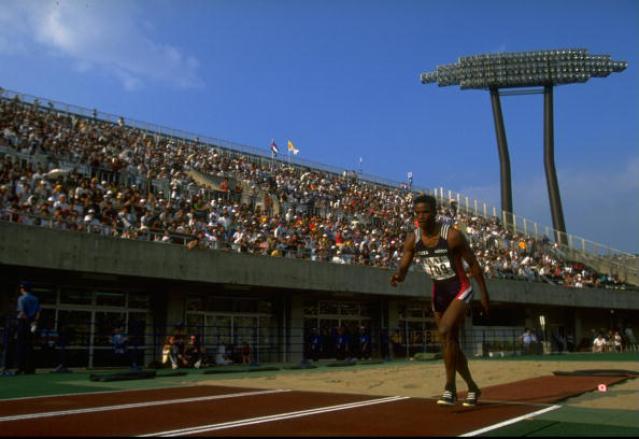
As an example, if your run-up is about 20 running steps, mark the point of your 20th stride. Repeat your run a few times to determine your average run length. If the average distance is 18 meters, then set the mark at 18 meters from the front of the take-off bar to start the run.
The best option would be to measure the length of the run in feet. This way you will know the length of your run much more accurately.
Remember that adrenaline or a tailwind can affect the run. For example, if a tailwind is blowing during your jump, then take your takeoff mark back a little, because your speed with a tailwind will be slightly higher than without it.
Takeoff run will be individual for each participant. The main goal of the run is to push off the take-off bar with maximum acceleration without losing control of the movements.
Remember that if you reach maximum acceleration with 10 steps, then the additional two steps will not be able to help you jump further, on the contrary, by extending the run-up too much, you will lose speed. That is why young jumpers should choose a short run. Once they have gained strength and stamina, you can let them lengthen their run to gain more speed for the jump. For example, in a normal high school jumpers use a run-up of approximately 16 steps.
Different coaches have their own opinion at the expense of the first step of the run. Some people like to say that at the beginning of the run there should be a pushing leg in front, while others believe that the best option there will be a setting of the fly leg.
The best solution for young jumpers is to try both methods and decide which of these two options suits them best.
Takeoff. Initial and transitional phases.
The run of 16 steps can be divided into 4 phases, each of which will last 4 steps.
The initial phase resembles a slow start for a sprint distance to many, only without the use of starting blocks. When performing the initial phase:
1. Assume your starting position and start accelerating with your head slightly lowered, with active work hands
2. Begin to raise your head and gradually straighten up, giving the body the vertical position necessary to begin the transition phase of the run.
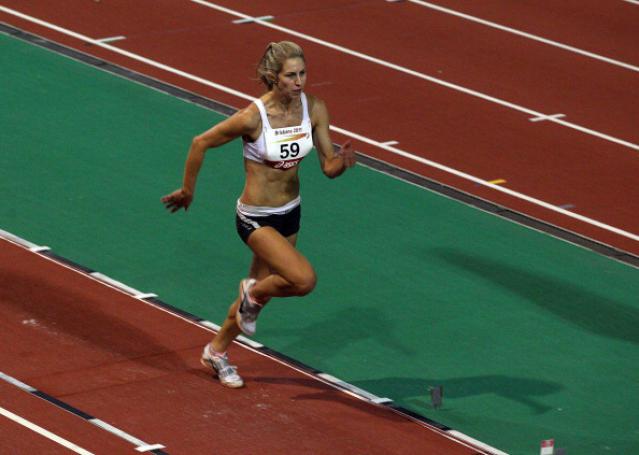
By the end of the transition phase, your running structure should resemble that of a sprint. Remember to direct your gaze straight ahead throughout the acceleration.
We continue the run - the attacking phase and the final steps.
In the attacking phase, all your efforts are aimed at achieving maximum speed. Your body is in an upright position, the gaze is directed strictly to the horizon. Do not look at the bar - you have not yet begun to prepare for the repulsion.
Run fast and easy with proper, well-controlled sprinting technique and keep building up speed. In general, the run-up during the first three phases should create increasing, consistent and controlled acceleration.

In the final steps, you must transfer your accumulated speed into the push, while fully controlling your movements. Don't lower your head. As soon as you look down at the bar, you will lose speed. Train more often to form a stable run-up, then you will definitely hit the bar and avoid a foul.
On the penultimate step, put your foot on the whole foot. Take this step a little longer to lower your hips and center of gravity, and to bring your center of gravity behind your front leg. Confidently push off and do final step a little shorter than during the run.
Repulsion
Usually, jumpers who write right hand the push leg is the left leg. Young jumpers can try to jump from doing points with different legs to figure out which one is best for them. As you push off the bar, your body will lean back a little: your foot will be in front, your hip will be slightly behind your foot, and your shoulders will be slightly behind your hip.
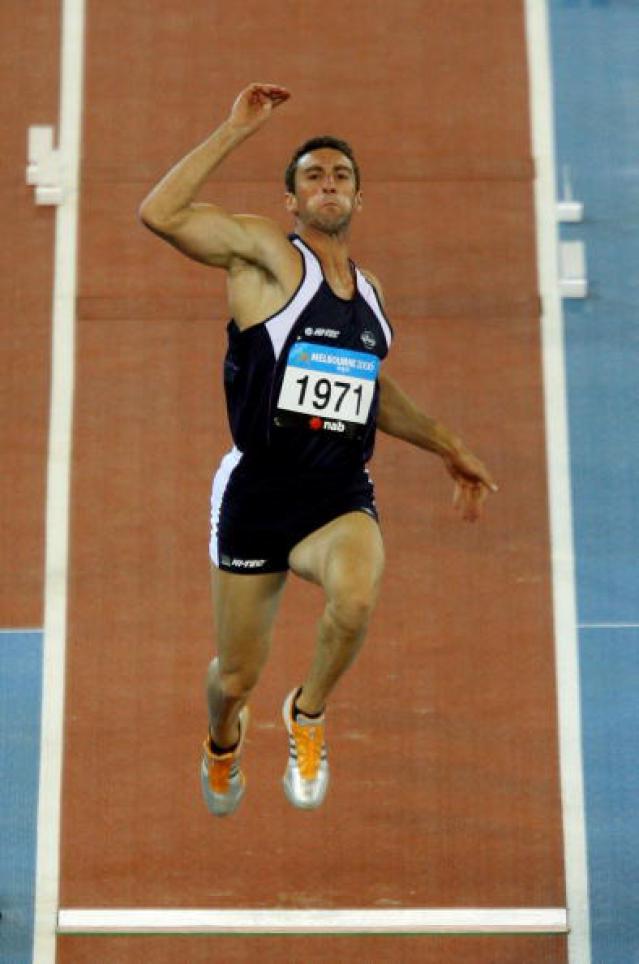
Once you've placed your take-off leg on the bar, actively pull back your opposite arm and bring the shin and thigh of your swing leg forward.
Your arms and swing leg are brought forward. The center of mass of the body, which remained behind your pushing leg at the moment of the penultimate step, begins to move forward during the repulsion.
The departure angle after takeoff must be between 18 and 25 degrees. Remember to look ahead of you and not look down into the hole.
Flight phase - departure in a step.
It doesn't matter what flight technique you use, the main objective of this element is to keep the movement straight after the push off, not allowing your upper body to rotate and knock you off balance.
Take off in a step - looks and performs the same as it sounds - this is a regular long step. After the take-off, your push leg remains behind, your swing leg is brought forward and fixed in this position, and your arms are raised up. As soon as the landing begins, your pushing leg moves forward, connecting with the fly leg, and your arms begin to rotate in an arc: forward-down-back.
Flight phase - arched jump
As with any style of jumping, after taking off from the bar, the fly leg is brought forward. Then, let the fly leg come down to a vertical position, while the push leg, on the contrary, move forward to the same position as the fly leg. Stretch your arms above your head, thereby preventing yourself from deviating from a straight line.

Just before the climax of your flight, bend your knees so that your feet are approximately parallel to the ground.
Once you have reached the highest point, bring your feet forward so that your feet are somewhat parallel to the ground, and bring your arms forward and down. Be careful that your hands are above the level of your legs when you land.
Flight phase - running through the air
This style of jumping in the first half of the flight looks like running through the air. The natural forward movement of the swing leg after the takeoff is similar to the first step in the air. Next, take the fly leg back and down, while raising the push leg, bending it at the knee and bringing it forward. At the top of the flight, your arms should be raised above your head. At this time, your take-off leg should be facing forward and approximately parallel to the ground, and your fly leg should be under you in a bent position as comfortable as possible.
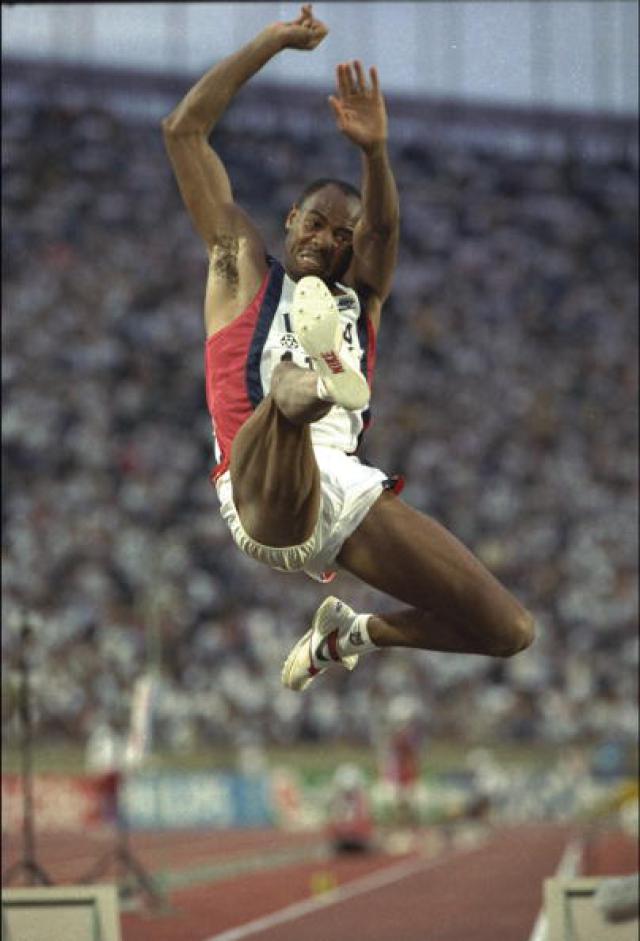
Lock the push leg, and as soon as the landing begins, pull your fly leg forward, simultaneously rotating your arms back and forth.
In the landing phase, take your hands out from behind your back and stretch them forward.
Landing
The result in long jump is measured by the part of your body that left a mark on the surface of the jump pit closest to the take-off line, and not by the first part of the body that left a mark on the sand. In other words, if you initially landed on your feet, and then your hands hit part of the hole behind you, your result will be determined by the mark left by your hands.
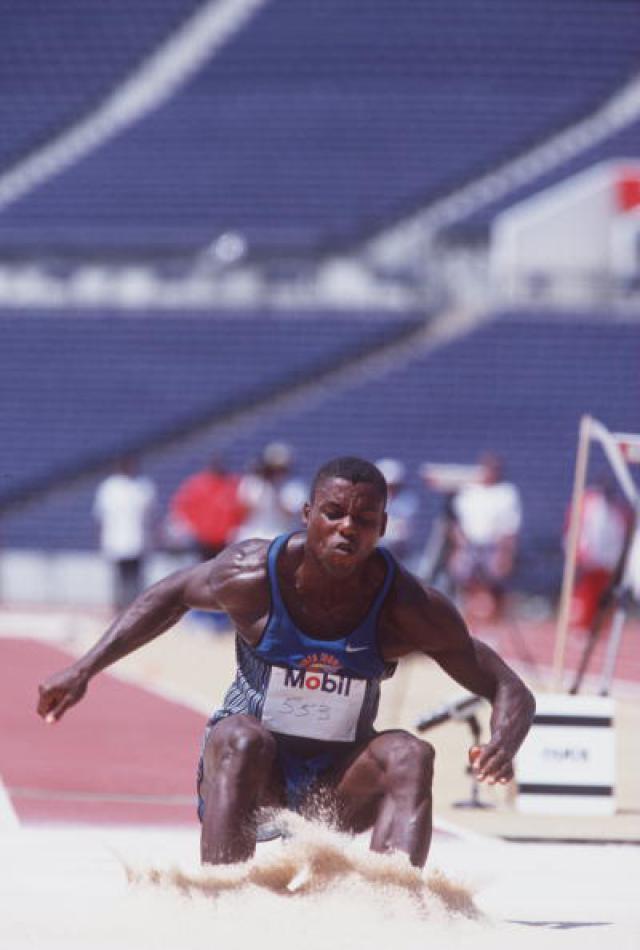
No matter what jumping technique you use, try to reach as far as possible with your legs when landing and do not touch the sand hole with the mark left by your feet with other parts of your body.
As soon as your heels touch the hole, push down with them and drive your hips forward. This movement, coupled with the speed at which you took off, should take your body past the point where your feet hit the sand.
Summing up
A successful long jumper combines a combination of talents that can make many jumpers successful in various types athletics such as sprinting, hurdling or other jumping events.

In the long jump, you can't do without controlled running speed, practiced takeoff, fast takeoff and technical landing. This means long jumpers must combine physical ability with many hours of training. Work on the technical and physical components of the jump will inconspicuously pay off with personal records in competitions and you will happily remember the workouts done.









